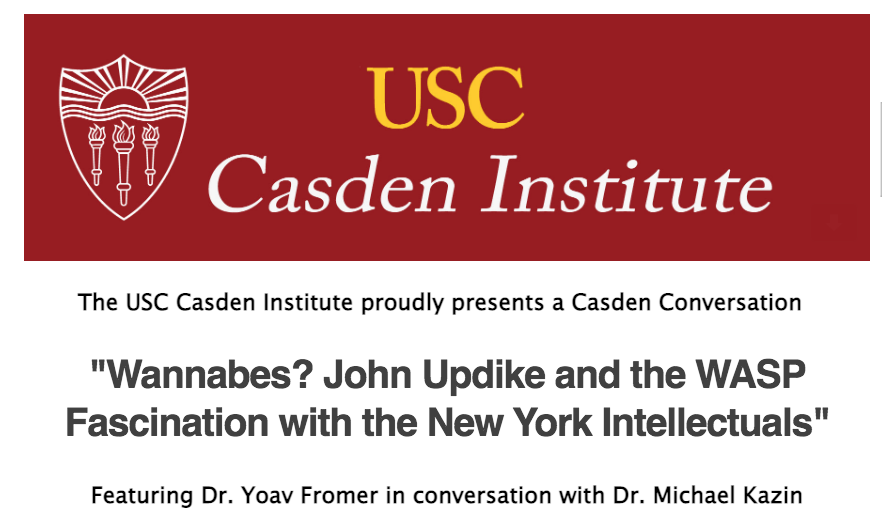Hear Updike Society member Yoav Fromer (author of The Moderate Imagination: The Political Though of John Updike and the Decline of New Deal Liberalism) in conversation with history professor Michael Kazin, whose most recent book was named an Editor’s Choice by The New York Times Book Review. The Zoom event is scheduled for April 18, 2021 from noon to 1:15, PST. To participate, register here.
Category Archives: Updike in Context
Updike was a kinder, gentler reviewer, even when he wasn’t
Yesterday, on John Updike’s 89th birthday, Literary Hub published an article by Walker Caplan that noted how Updike, “with one notable exception, was an incredibly kind reviewer.” Those familiar with Updike’s work are probably wondering which one that might be: his review of Philip Roth, Salman Rushdie, Tom Wolfe, or Toni Morrison? Okay, so there’s more than one. The fact remains, Updike was an incredibly generous reviewer who first and foremost refused to criticize a writer for not writing the kind of book that the reader or reviewer might have preferred. Updike was so devoted to the idea of writers reviewing writers that he set forth his now-famous list of rules for reviewing books.
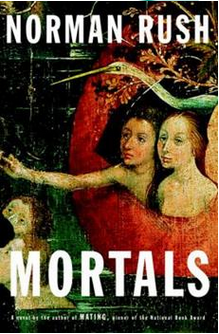 Caplan includes a handful of criticisms that range from an “it could be me” response—”The elder Trellis [from Flann O’Brien’s At-Swim-Two-Birds] is kept immobilized in his bed by surreptitiously drug-induced sleep while his characters, including a number of American cowboys recruited from the novels of one William Tracy, run wild. At least, that’s what I think is happening.”—to the blunt: “Ray Finch, the hero of Norman Rush’s lengthy new novel, Mortals, finds many things annoying. . . . Iris and Ray have been married for seventeen years, and she gives signs of having the seventeen-year itch. This is less surprising to the reader than to Ray, who is perhaps the most annoying hero this reviewer has ever spent seven hundred pages with.”
Caplan includes a handful of criticisms that range from an “it could be me” response—”The elder Trellis [from Flann O’Brien’s At-Swim-Two-Birds] is kept immobilized in his bed by surreptitiously drug-induced sleep while his characters, including a number of American cowboys recruited from the novels of one William Tracy, run wild. At least, that’s what I think is happening.”—to the blunt: “Ray Finch, the hero of Norman Rush’s lengthy new novel, Mortals, finds many things annoying. . . . Iris and Ray have been married for seventeen years, and she gives signs of having the seventeen-year itch. This is less surprising to the reader than to Ray, who is perhaps the most annoying hero this reviewer has ever spent seven hundred pages with.”
Little French Bridal Shop author recalls moment with Updike
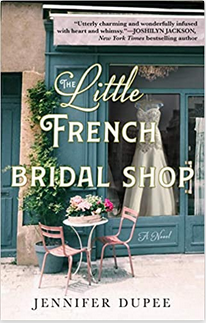 In a Q&A with The Nerd Daily, Jennifer Dupee, author of the debut novel The Little French Bridal Shop, was asked, “Was there a moment in your writing career where you thought, ‘Okay, now I am officially a REAL writer?’ Can you tell us about that time in your life?”
In a Q&A with The Nerd Daily, Jennifer Dupee, author of the debut novel The Little French Bridal Shop, was asked, “Was there a moment in your writing career where you thought, ‘Okay, now I am officially a REAL writer?’ Can you tell us about that time in your life?”
Dupee responded, “I’m still not sure I feel like a REAL writer. It’s just something I’ve always done and will always continue to do. But I do have one small anecdote: My grandmother was friends with John Updike. When she died, we both spoke at her funeral. He came up to me afterward and praised my eulogy. In that moment, I felt a little like I’d arrived.”
Read the full interview.
Roth letters reveal a complex relationship with Updike
In his May 21, 2020 article on “The Philip Roth Archive,” Jesse Tisch described “A fan’s obsessive rummage through the letters and papers of the writer who died two years ago today” that “reveals a playful, funny, brilliant man.” The letters also reveal a great deal about the complicated relationship Roth had with fellow literary giant John Updike.
“Their relationship is hard to categorize, not a friendship, exactly, nor merely an acquaintance,” Tisch wrote. “For all their similarities—two literary grandees of the same generation, both precocious, prolific, obsessed with male desire and waning potency—they were strikingly different. Religious and secular. Serene and intense. High style and vernacular. Whereas Updike poured out novels, Roth, a plebeian laborer, assembled them brick by brick. To say that writing was pleasure for Updike and torture for Roth is to overstate things only slightly.
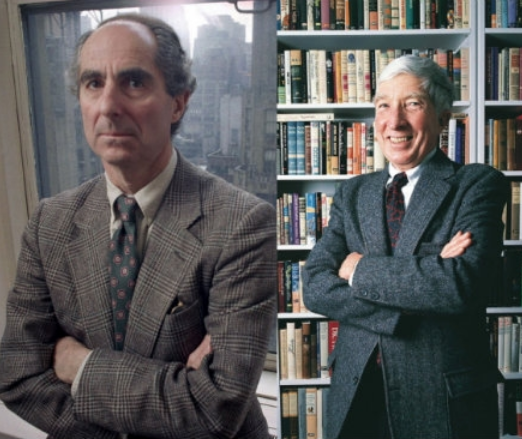 “The Roth-Updike letters reveal a deeper, more complex relationship than I had known about. Despite their differences, Roth admired Updike extravagantly, both as a novelist and a critic. “There’s no other writer (which is to say no one at all) in America whose high opinion means more to me than yours,” Roth wrote Updike in 1988. Roth pored over Updike’s reviews of his books, taking them to heart even when he didn’t agree: ‘take a look at page 181 of The Anatomy Lesson,’ he urged Updike in 1984. ‘My answer to the last paragraph of your review.’
“The Roth-Updike letters reveal a deeper, more complex relationship than I had known about. Despite their differences, Roth admired Updike extravagantly, both as a novelist and a critic. “There’s no other writer (which is to say no one at all) in America whose high opinion means more to me than yours,” Roth wrote Updike in 1988. Roth pored over Updike’s reviews of his books, taking them to heart even when he didn’t agree: ‘take a look at page 181 of The Anatomy Lesson,’ he urged Updike in 1984. ‘My answer to the last paragraph of your review.’
“Somehow, despite their mutual respect and occasional get-togethers, the friendship never deepened. Roth’s half of the correspondence is warm and funny (another difference: Roth was far funnier), his fondness tinged with envy. ‘Reading you when I’m at work discourages me terribly—that fucking fluency!’ Roth wrote Updike in 1978. That wasn’t the only source of envy. ‘He knows so much, about golf, about porn, about kids, about America,’ Roth told David Plante. ‘I don’t know anything about anything.’ Indeed, one picks up on a subtle antagonism to Roth’s joshing. ‘Poor Rabbit. Must he die just because you’re tired?’ he needled Updike in 1990. More than once, Roth bristled at Updike’s criticism. He couldn’t understand Jewish novels; he had no comprehension of Jewish history or the Jewish psyche. ‘We are in history up to our knees,’ he told an interviewer, dismissing Updike’s review of The Anatomy Lesson.
“To some degree, both men were guarded and self-protective. Updike’s shield was amiability; Roth’s was humor and flattery. Of the two, Roth seemed more eager to pursue a deeper friendship. Roth professed ‘affectionate sympathy and something even more than that’ to Updike in 1991, yet sensed a certain resistance, a studied aloofness, on Updike’s part. Any chance for friendship was ruined by Updike’s incisive criticism of Roth’s novels. Reviewing The Anatomy Lesson, Updike complained of ‘the grinding, whining paragraphs’ and suggested that ‘by the age of fifty a writer should have settled his old scores.’ That rankled. In 1993, Updike delivered several sharp blows to Roth’s ego in the process of criticizing Operation Shylock (final verdict: Roth was ‘an exhausting author to be with’). The final blow came in 1999, when Updike, writing in The New York Review of Books, endorsed Claire Bloom’s vindictive memoir of her relationship with Roth. That did it: Roth was furious; the men never spoke again. Late in life, his wounds somewhat healed, Roth would claim to regret their estrangement. ‘I think you are next after Gordimer,’ he wrote Updike in October 1991. Of course, neither would follow Gordimer, which proved another lasting connection between the men—America’s greatest nonwinners of the Nobel Prize.”
The fascinating article based on letters from the Philip Roth Archive covers a lot more ground than this. Here’s the link.
Updike recalled in well-known painter-writer’s short story collection
 Born in 1946 in Ressen,Bulgaria, Dimitri Vojnov is a well-known artist (oils, acrylics, pastels, sculptures) living in Germany who is recognized by The Europa Authentica Cultural Organization as a Magister Artis.
Born in 1946 in Ressen,Bulgaria, Dimitri Vojnov is a well-known artist (oils, acrylics, pastels, sculptures) living in Germany who is recognized by The Europa Authentica Cultural Organization as a Magister Artis.
In 2020, he published a collection of short-short stories and illustrations, Ready for New York (Norderstedt, Germany: Kelkheim, 2020). One of the stories is devoted to John Updike, whom Vojnov said “was a great inspiration to me.”
His website features a poem that in English reads, “I have pledged myself to painting, / like a monk to his church. / I do not preach, I confess. / I am not a painter, / I am a confessor”. Below is that story, “John Updike: Our Sex Instructor.” Ready for New York, is available in an Amazon Kindle edition.
Any more Updike movies in the works?
 The Hastings Tribune‘s Rich Heldenfels (Tribune News Service, Nebraska) was asked by a reader, “Do you know of any plans to make (remake) a film based on any John Updike novels?”
The Hastings Tribune‘s Rich Heldenfels (Tribune News Service, Nebraska) was asked by a reader, “Do you know of any plans to make (remake) a film based on any John Updike novels?”
Heldenfels replied, “I do not know of any plans. There have been a few adaptations of the works of Updike, one of the most admired American writers. There’s a 1970 movie of his novel Rabbit, Run, with James Caan, TV-movie Too Far to Go (1979) from Updike short stories, movies and TV productions inspired by the novel The Witches of Eastwick and a few shorter productions.
“Shortly after Updike died in 2009 at the age of 76, Scott Timberg pondered Updike’s ‘dozens of novels and several hundred short stories’ for TheWrap.com and saw several reasons why Updike did not make it to the movies much. One was style: ‘His writing is so visual, at the level of image and metaphor, it’s almost redundant to put it into a visual medium.’ In addition, ‘The “American small town, Protestant middle class” as he described his milieu, has not been of very big interest, personally or cinematically, to the Hollywood establishment.’ (The Witches of Eastwick with its supernatural element was thought more accessible for audiences.) Nor has Updike had a film-industry champion eager to put his work onscreen the way some other writers of his era have, Timberg wrote.
Late New Yorker writer called Updike the last of his kind
 New Yorker writer Ved Mehta died on January 9, 2021 at the age of 86, a venerable writer who became an American citizen in 1975 and whose opus magnum was an 11-volume autobiography. He was a meticulous wordsmith (each New Yorker piece was read 16 times) who, according to a National Herald (India) obituary, would work on close to a hundred drafts of every chapter before sending it off to the publisher.
New Yorker writer Ved Mehta died on January 9, 2021 at the age of 86, a venerable writer who became an American citizen in 1975 and whose opus magnum was an 11-volume autobiography. He was a meticulous wordsmith (each New Yorker piece was read 16 times) who, according to a National Herald (India) obituary, would work on close to a hundred drafts of every chapter before sending it off to the publisher.
“Now people don’t know how to write letters,” he once complained. “I think hardly anyone writes formal prose these days. John Updike was the last writer I know who wrote formal prose. By formal prose I mean writing that is elegant, precise, clear. Now the writing has become quite a bit like schoolgirls writing to their mums—letters about what’s going on in their schools. It’s different,” the obituary quoted him as saying.
When Updike waded into Nigerian politics
 BBC News recently ran a story by Adaobi Tricia Nwaubani about Nigerian blogger Teslim Omipidan, whose passion for history and all things Nigerian has connected famed American writer John Updike to his country’s politics. Here is one of Omipidan’s stories:
BBC News recently ran a story by Adaobi Tricia Nwaubani about Nigerian blogger Teslim Omipidan, whose passion for history and all things Nigerian has connected famed American writer John Updike to his country’s politics. Here is one of Omipidan’s stories:
In October 1961 a young American named Margery Michelmore caused a stir when, in the midst of Peace Corps training at the University of Ibadan in southwestern Nigeria, she decided to send a postcard to a friend back home. In it, she described the “squalor and absolutely primitive living conditions” of her new environment. “A Nigerian saw the postcard before it was mailed; distributed photocopies around the campus—sparking riots from the students who found the private message outrageous, and an international incident that eventually drew the involvement of then US President John F. Kennedy.”
Where does Updike come in?
“Back in 1961, acclaimed writer John Updike absolved Margery Michelmore of blame in the postcard incident. ‘Miss Machelmore did not sin in saying in a personal missive that she was startled, coming fresh from Foxboro, Massachusetts, to find the citizens of Ibadan cooking in the streets,’ he wrote in the 28 October issue of that year’s The New Yorker. ‘And the fellow student who picked up the dropped card and, instead of mailing it, handed it to the local mimeographer seems guilty of a failure of gallantry. One may or may not cook in the streets, but one does not read other people’s mail and then demonstrate because it is insufficiently flattering,'” Updike had written in “The Talk of the Town.”
Read the whole article: “The Nigerian blogger scouring the past to inform the future”
Scientific American writer contemplates poetry and science
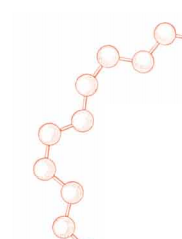 In the Arts & Culture/Opinion section of Scientific American posted 23 December 2020, Dava Sobel talks about being tickled to discover “a little over a year ago that the magazine had carried poetry in its earliest issues. Volume 1, Number 1, for example, dated 28 August 1845, included a poem called ‘Attraction’ that touched on gravity, magnetism and sexual allure. Within a few years, however, the magazine’s original publisher, Rufus Porter, sold Scientific American, and the new owners showed no interest in poetry.
In the Arts & Culture/Opinion section of Scientific American posted 23 December 2020, Dava Sobel talks about being tickled to discover “a little over a year ago that the magazine had carried poetry in its earliest issues. Volume 1, Number 1, for example, dated 28 August 1845, included a poem called ‘Attraction’ that touched on gravity, magnetism and sexual allure. Within a few years, however, the magazine’s original publisher, Rufus Porter, sold Scientific American, and the new owners showed no interest in poetry.
“Between the 1840s and the 2010s, poems appeared in the magazine only rarely, most notably in January 1969, when W.H. Auden offered ‘A New Year Greeting’ to ‘all of you Yeasts, / Bacteria, Viruses, / Aerobics and Anaerobics . . . for whom my ectoderm is as Middle-Earth to me.’ That same issue contained verses from poet and novelist John Updike—verses inspired by his reading of the September 1967 special issue devoted to materials science. ‘The Dance of the Solids,’ with its rhyming references to ceramics, polymers and nonstoichiometric crystals, also appeared in Updike’s collection Midpoint and Other Poems.”
Read the whole article: “Nature in Verse: What Poetry Reveals about Science”
Readers in Covid-19 isolation are turning to John Updike
Frank T. Pool (Longview News-Journal)recently quoted Emily Dickinson (“There is no Frigate like a Book / To take us Lands away”) and referenced John Updike, who “once said that he had read all of Dickens except for one novel, Our Mutual Friend, which he was saving for some time in his life he really needed it.”
As David McGrath of the Naperville Sun observed, “If there’s one benefit to self-quarantining and sheltering in place, it’s the gift of time you now have to read”—and McGrath and a number of readers are reading, rediscovering, and recommending Updike.
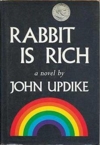 McGrath has three criteria for picking a solitary confinement book to read: ” 1) The book is pleasurable to read. 2) The book is a long-lasting self investment. 3) The book is a prize winner, but one we probably have yet to read.” Updike heads McGrath’s list of top 10 recommendations for reading in the time of Covid-19—specifically, Updike’s Pulitzer Prize-winning novel, Rabbit Is Rich, which McGrath calls “one of the titles you might not have read by the American novelist, who should have won the Nobel Prize in any single year from 1981 to 2008. That’s 27 times that the Nobel committee blew it.”
McGrath has three criteria for picking a solitary confinement book to read: ” 1) The book is pleasurable to read. 2) The book is a long-lasting self investment. 3) The book is a prize winner, but one we probably have yet to read.” Updike heads McGrath’s list of top 10 recommendations for reading in the time of Covid-19—specifically, Updike’s Pulitzer Prize-winning novel, Rabbit Is Rich, which McGrath calls “one of the titles you might not have read by the American novelist, who should have won the Nobel Prize in any single year from 1981 to 2008. That’s 27 times that the Nobel committee blew it.”
For British Vogue editor Rachel Garrahan (“The Vogue Editors’ Favourite Books of All Time”), the series she’s “looking forward to rereading is John Updike’s Rabbit books. Against a backdrop of massive social, political, and economic change in post-war America, it follows Harry “Rabbit” Angstrom through the ups and downs of what David Baddiel once described as his ‘beautifully mundane’ life. Rabbit is a perfectly imperfect protagonist who makes you laugh, cry and scream at him in frustration. It will be good to do those things to someone other than my husband and children over the coming weeks.”
 Meanwhile, satirist Craig Brown, himself the author of 18 books, told The Guardian that the writer he returns to most often is John Updike, who is “pretty reliable.”
Meanwhile, satirist Craig Brown, himself the author of 18 books, told The Guardian that the writer he returns to most often is John Updike, who is “pretty reliable.”
And more recently, The Washington Post staff included Hub Fans Bid Kid Adieu as one of “The best sports books to read now” in this time of self-isolation:
Micah Pollack writes, “Less a sports book and more a sports essay, Updike’s 1960 New Yorker chronicle of Ted Williams’s final game as a player lives on nearly 60 years later as a towering piece of sportswriting. Lyrical, mystical and with a fluidity to match the Splinter’s swing, it has been reprinted countless times, but the 50-year anniversary that came out in hardcover 10 years ago is worth the time and the change. It includes a great afterward from the author on his fascination with Williams, and both the inside cover and back cover pull the curtain back on some of Updike’s own self-editing, a nice touch. Updike dabbled in sports in his Rabbit series (those novels’ central figure is a former high school basketball star), but this was his only true foray into sportswriting. He was one of 10,454 at Fenway Park on that chilly, overcast September day. He stayed to watch Williams homer in his final at-bat. Then he left to write about it. He retired as a sportswriter, undefeated.”
The Star Tribune‘s longtime baseball reporter and current college sports editor Joe Christensen also included Hub Fans Bid Kid Adieu in his “Suggested sports books, from the Star Tribune Staff” recommendations: “John Updike and a few thousand Bostonians turned out to witness what would be Ted Williams’ final baseball game. That he hit a home run in his last at-bat and refused to tip his cap to a roaring crowd, provides the germ for the best sports profile ever written.”

